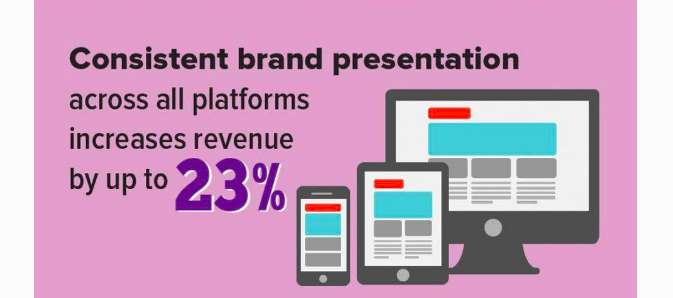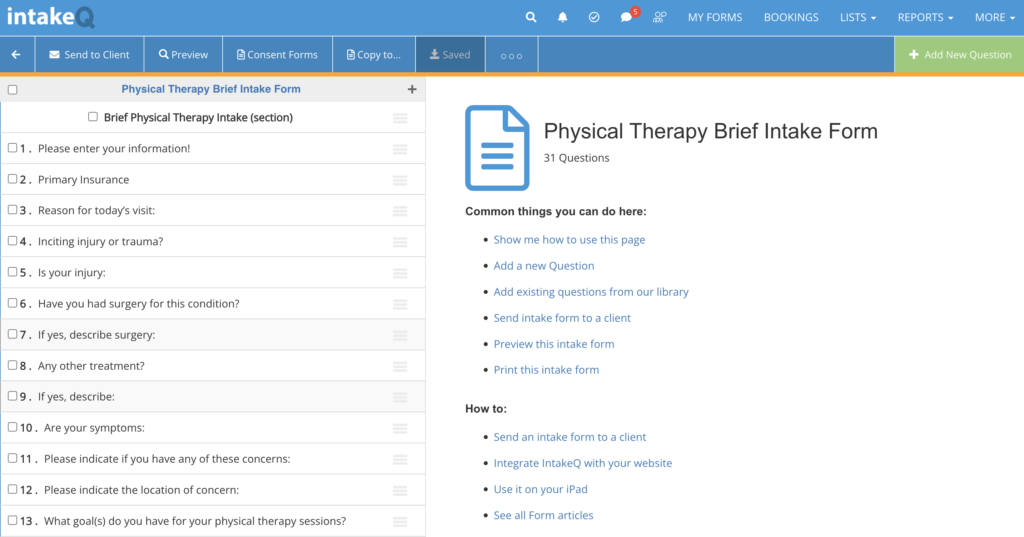6 Common Mistakes When Creating Intake Forms
As a healthcare practice, you likely already know the importance of having new (and existing) patients fill out a thorough intake form.
Not only is it your first glimpse into a patient’s problem, health history, and pertinent concerns, but it will also be the basis for that patient’s file, which you will continue to build upon for as long as they are a client.
On the flipside, it’s also one of the patient’s first interactions with your office, so you want it to be comprehensive, professional, and friendly.
You may think that intake forms are just a simple way to get some basic information, but you’d be wrong. By not being thoughtful about what to include, you may be missing out on gathering important insight.
Keeping reading to learn some of the top mistakes practices make when creating intake forms.
1. Not customizing it for your industry
Obviously, if you’re a nutritionist, your questions will be different than if you are a dentist. And if you are a dentist, then your intake forms will need to include different prompts than if you are a massage therapist.
Though essential background information will be the same across the board (name, birth date, address, contact information), intake forms are not one-size-fits-all.
Are you an office that takes insurance? You’ll want to ask for that information upfront to avoid any confusion or headaches later.
Is it important to know family medical history? Past injuries and procedures? Personal treatment preferences? Then you’ll need to include questions around each of these.
So before you dive right in, sit down alone or with your staff to think about and discuss the information that would be most beneficial for your team to have before seeing a patient for the first time.
2. Failing to include proper branding
In addition to tweaking your intake form to accommodate your questions needed for your specialty area, you should also be taking advantage of the opportunity to include branding.
As we mentioned above, intake forms are one of the first official exchanges between your practice and the patient, so use it as a chance to introduce your brand identity and any strategic messaging.
Not only does this personalize the form to your office, but it also helps to increase logo recognition and can make a patient feel more comfortable coming in for an appointment since they are familiarized with your practice already.
And, according to Forbes, “consistent brand presentation across all platforms increases revenue by up to 23%” for businesses.

So think of it as free marketing space!
3. Asking only closed-ended questions
Using “yes” and “no” questions on your intake form is obviously unavoidable. It can be the most simple, effective way to get straightforward answers to straightforward questions. (Such as: “Do you experience (this type of symptom)?” or, “Are you on medications?”)
However, both these examples require follow-up questions that should be open-ended. It’s good to know if the patient is experiencing some kind of discomfort, but you’ll also want to know the intensity, frequency, and how it’s affecting their daily life.
Similarly, it’s not enough just to know that a patient is on medication. You also need to know which medications, how often they take them, what the medications are treating, and how they feel on these medications.
In these cases, open-ended questions are required to get the level of detail that you need.
Open-ended questions are also important to gather additional information that you may not know to ask for specifically. Checking in on a patient’s current mental health, asking if they’d like to share anything additional, or prompting them to ask questions that they’d like answered during the appointment can all help you deliver the highest level of care (and be more efficient while doing so).

4. Skipping skip logic questions
Using skip logic (otherwise known as conditional) questions, you are able to automatically tailor an intake form to each individual patient. So, if you bring it back to high school math, X occurs because of Y.
For example, say you want to know if a patient has history of a certain condition. If, in fact, they do, that opens the floodgate to include a number of additional questions that you’d like to ask.
The tricky thing about conditional questions is that they really only work in a digital format—can you imagine having a long paper form that includes a list of questions that don’t even pertain to each patient? Not only does it make it an incredibly long (and seemingly overwhelming) document, but it can also confuse the patient.
With IntakeQ’s online forms, you can structure it so that if a patient checks “yes” for a certain question, it then opens up an additional line of questioning. Patients that click “no” will never even have to see them. (How easy does that sound?)
Check out this page to learn about setting up conditional questioning with IntakeQ.
5. Using paper intake forms
You aren’t seriously still using paper intake forms, are you?
Not only do paper intake forms limit the personalization and thoroughness of your questioning (see #4), but they also mean your patients have to fill them out after they get to your office. And check in. And are sitting in the waiting room.
This equates to more time in the waiting room for each of your patients, potentially throwing off the schedule for your entire day.
Make their life (and your own) easier by giving them the opportunity to complete their forms online. It also allows them the chance to think about their symptoms, history, and questions without the pressure of trying to finish in record time or being concerned about nosy waiting room neighbors.
Sounds like a win-win, right?
Plus, your staff is then able to quickly and accurately transfer information into a patient’s personal electronic health record—no deciphering handwriting or manually entering info necessary.
Need help setting up your online intake form? Click here to learn how to do it in just 10 minutes.
6. Not asking where a patient heard of you
This one may seem pointless at first thought—why would we care where the patient learned about us if they’re already here?
Trust us, this is valuable information to have as a business.
A new patient being referred to you through word of mouth is different than the patient seeing your spot on the local news channel or receiving a targeted ad on Facebook.
You likely spend some cash on marketing and advertising plans, and it’s critical to know if these avenues are working effectively to grow your business. This way, when the next quarter or fiscal year rolls around, you can tweak your budgets and focus your marketing efforts on the channels that are successful at generating leads for your practice.
Or you might decide that the belt needs to be tightened, so it may be time to think about debuting a referral program or strategically going after earned media (after all, PR is free marketing).
Whatever the case, you can’t make an educated business decision without having data, so take the opportunity to gather some using your intake form.
Free Download: Intake Form Cheat Sheet
The Bottom Line
Using a digital platform gives you more freedom when it comes to delivering thorough, personalized, and helpful intake forms to your patients.
By making sure you avoid the six common mistakes above, you’ll be well on your way to gathering the proper insight ahead of appointments.
And better yet? The team at IntakeQ is always here to help you create the right forms for your practice.





